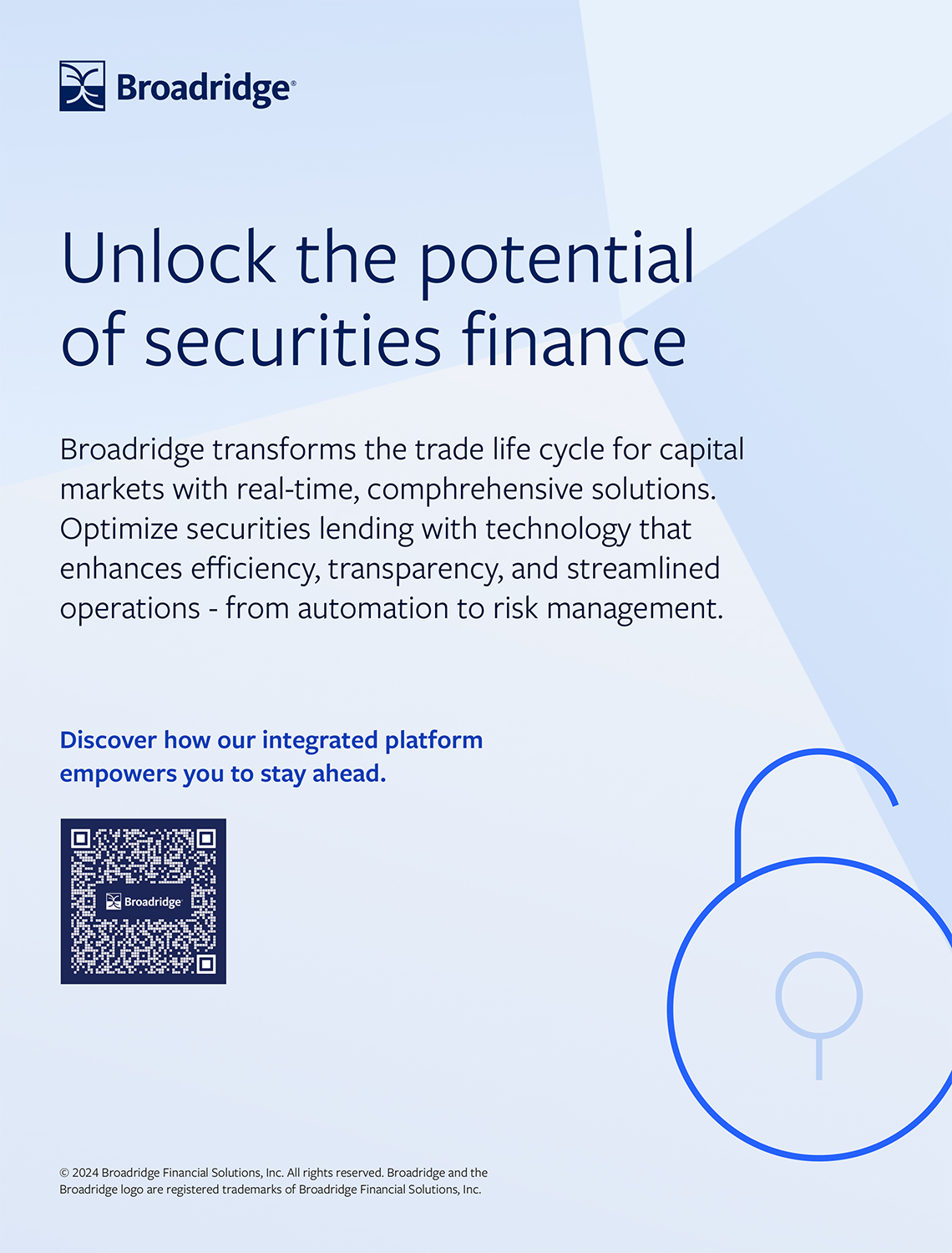ISLA adds securities finance code to CDM
11 May 2021 UK
 Image: stock.adobe.com/rost9
Image: stock.adobe.com/rost9
The International Securities Lending Association (ISLA) has contributed code to the core Common Domain Model (CDM) database — a single digital representation of securities trade events and life cycles.
The contribution marks the first time components of a non-derivative product have been contributed to the CDM, and is an “important milestone”, ISLA said, in the ongoing development of a truly cross-product model for the benefit of the financial services industry.
A CDM encodes a transaction and the events that occur to that transaction “explicitly and unambiguously”, so that common inputs lead to common outputs throughout the lifecycle of a transaction, ISLA says. Ultimately, a CDM would encode the entirety of a transaction from onboarding, contract negotiation, execution, processing and ultimately termination.
ISLA’s contribution allows the recording of securities loan product and transaction definitions, as well as a settlement and allocation event for a cash settled ‘delivery versus payment’ loan.
The new code, completed at the end of last year and piloted by fintech firm REGnosys, will build on the CDM first launched by the International Swaps and Derivatives Association (ISDA) as a blueprint for how derivatives are traded and managed.
ISLA CEO Andrew Dyson says: “I am absolutely delighted that we are now able to begin the process of sharing the power of the CDM with our wider community. The addition of our pilot work from last year within the core CDM is a clear statement of intent from ISLA and our friends at ISDA.
“As we progressively develop the combined open source cross product CDM, market participants will start to see the benefits of this important investment that will set the backdrop for the future state of our markets.”
ISDA chief executive Scott O’Malia comments: “Having securities lending products and events added to the CDM is an important step in our shared ambition to create a single set of machine-readable standards that can be used across asset classes. This will ultimately increase efficiencies for market participants, reduce costs and enable greater levels of automation.”
The contribution marks the first time components of a non-derivative product have been contributed to the CDM, and is an “important milestone”, ISLA said, in the ongoing development of a truly cross-product model for the benefit of the financial services industry.
A CDM encodes a transaction and the events that occur to that transaction “explicitly and unambiguously”, so that common inputs lead to common outputs throughout the lifecycle of a transaction, ISLA says. Ultimately, a CDM would encode the entirety of a transaction from onboarding, contract negotiation, execution, processing and ultimately termination.
ISLA’s contribution allows the recording of securities loan product and transaction definitions, as well as a settlement and allocation event for a cash settled ‘delivery versus payment’ loan.
The new code, completed at the end of last year and piloted by fintech firm REGnosys, will build on the CDM first launched by the International Swaps and Derivatives Association (ISDA) as a blueprint for how derivatives are traded and managed.
ISLA CEO Andrew Dyson says: “I am absolutely delighted that we are now able to begin the process of sharing the power of the CDM with our wider community. The addition of our pilot work from last year within the core CDM is a clear statement of intent from ISLA and our friends at ISDA.
“As we progressively develop the combined open source cross product CDM, market participants will start to see the benefits of this important investment that will set the backdrop for the future state of our markets.”
ISDA chief executive Scott O’Malia comments: “Having securities lending products and events added to the CDM is an important step in our shared ambition to create a single set of machine-readable standards that can be used across asset classes. This will ultimately increase efficiencies for market participants, reduce costs and enable greater levels of automation.”
NO FEE, NO RISK
100% ON RETURNS If you invest in only one securities finance news source this year, make sure it is your free subscription to Securities Finance Times
100% ON RETURNS If you invest in only one securities finance news source this year, make sure it is your free subscription to Securities Finance Times



